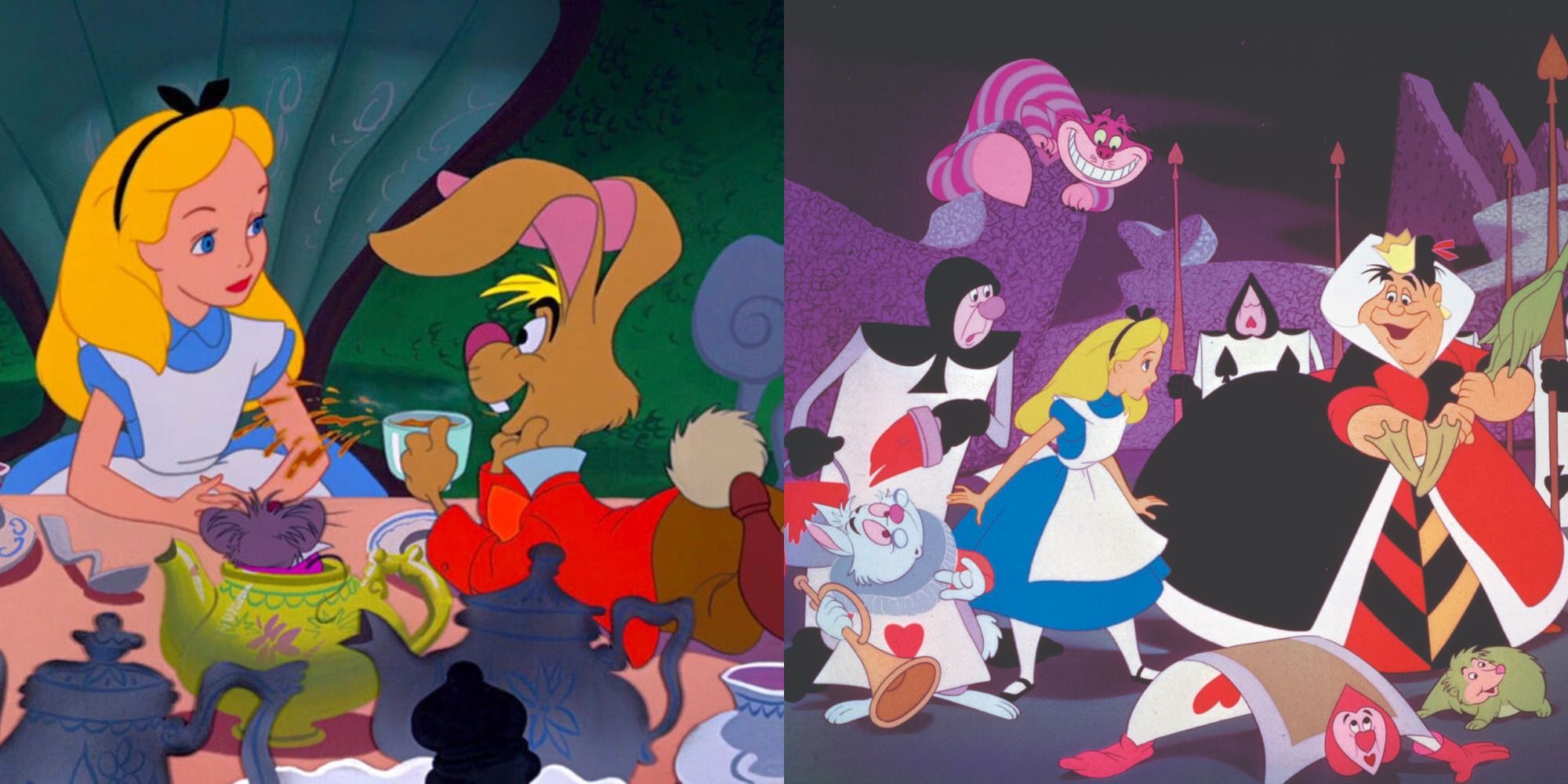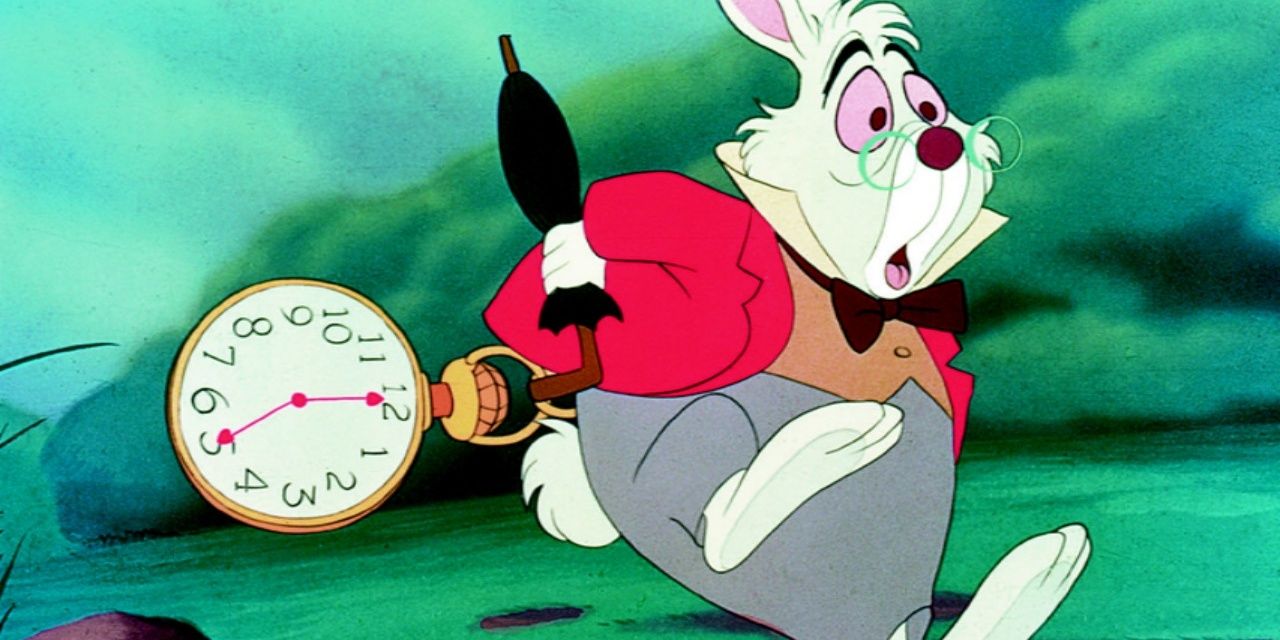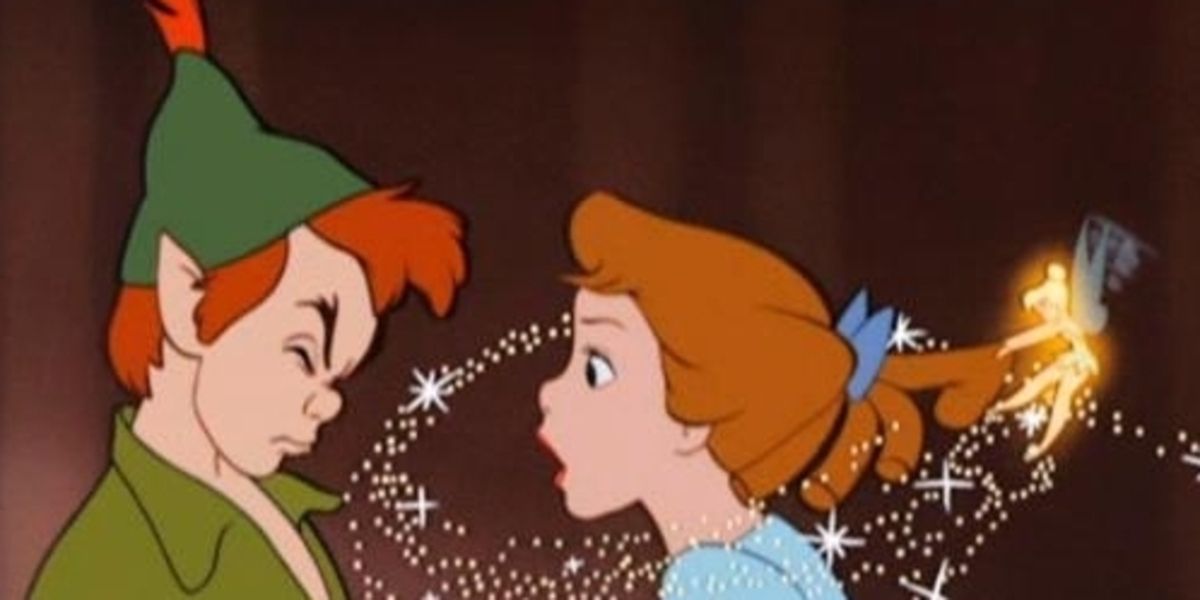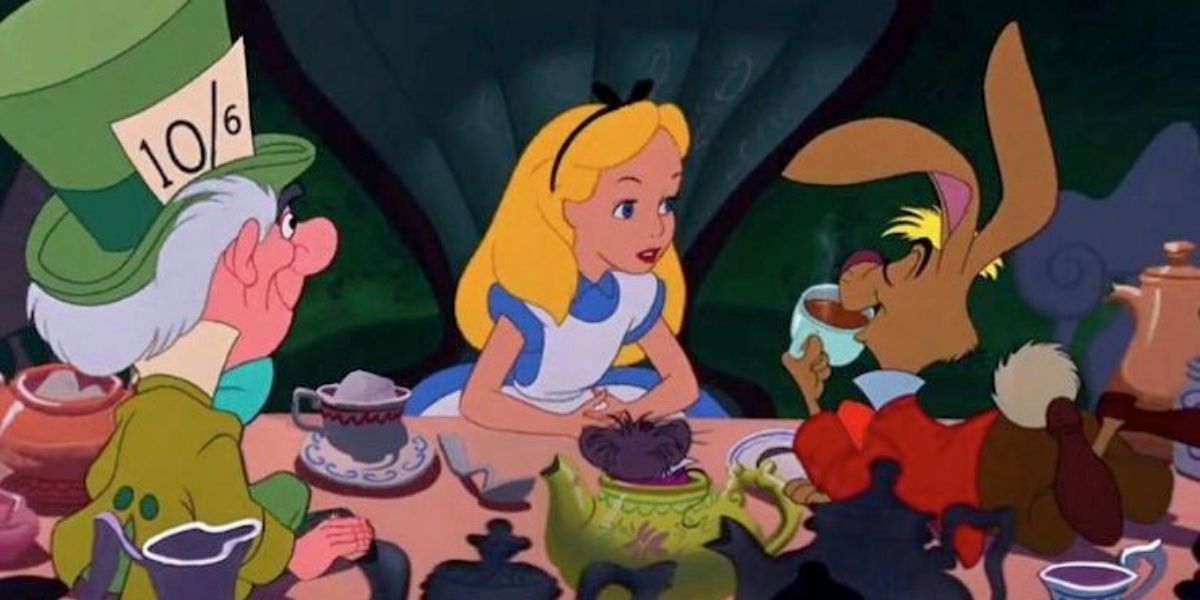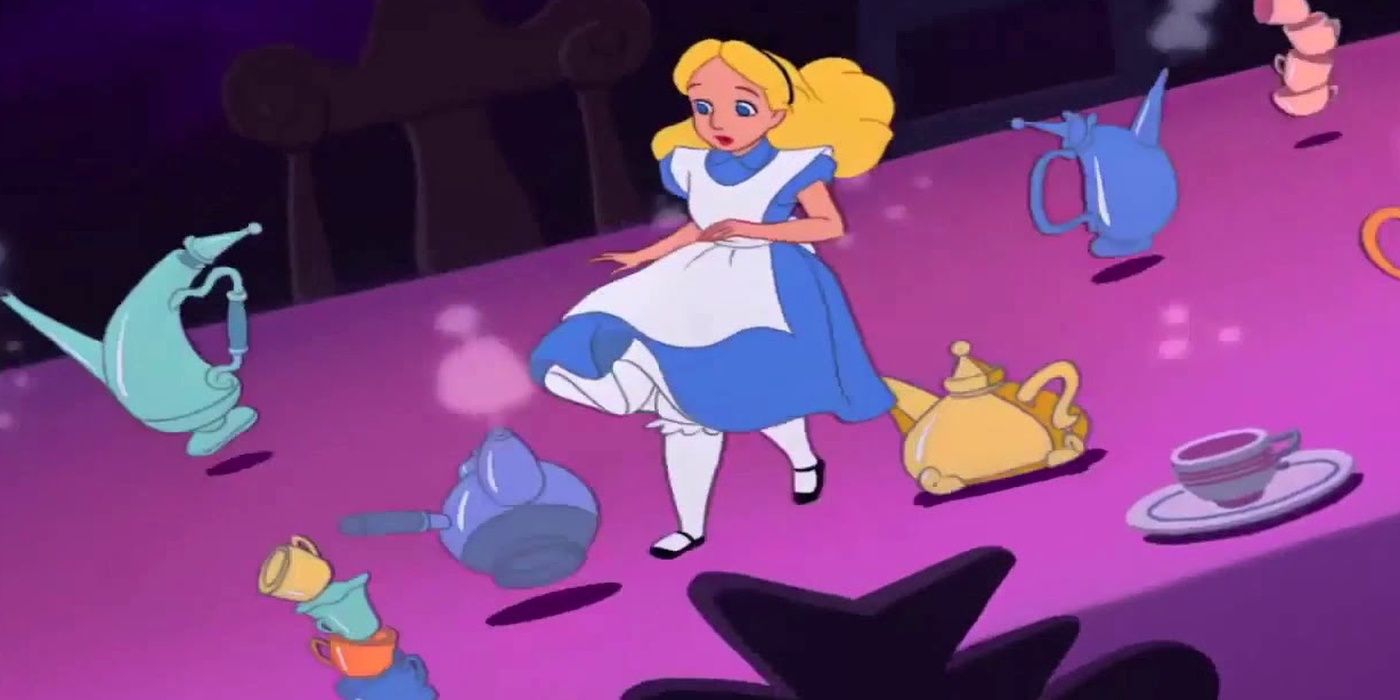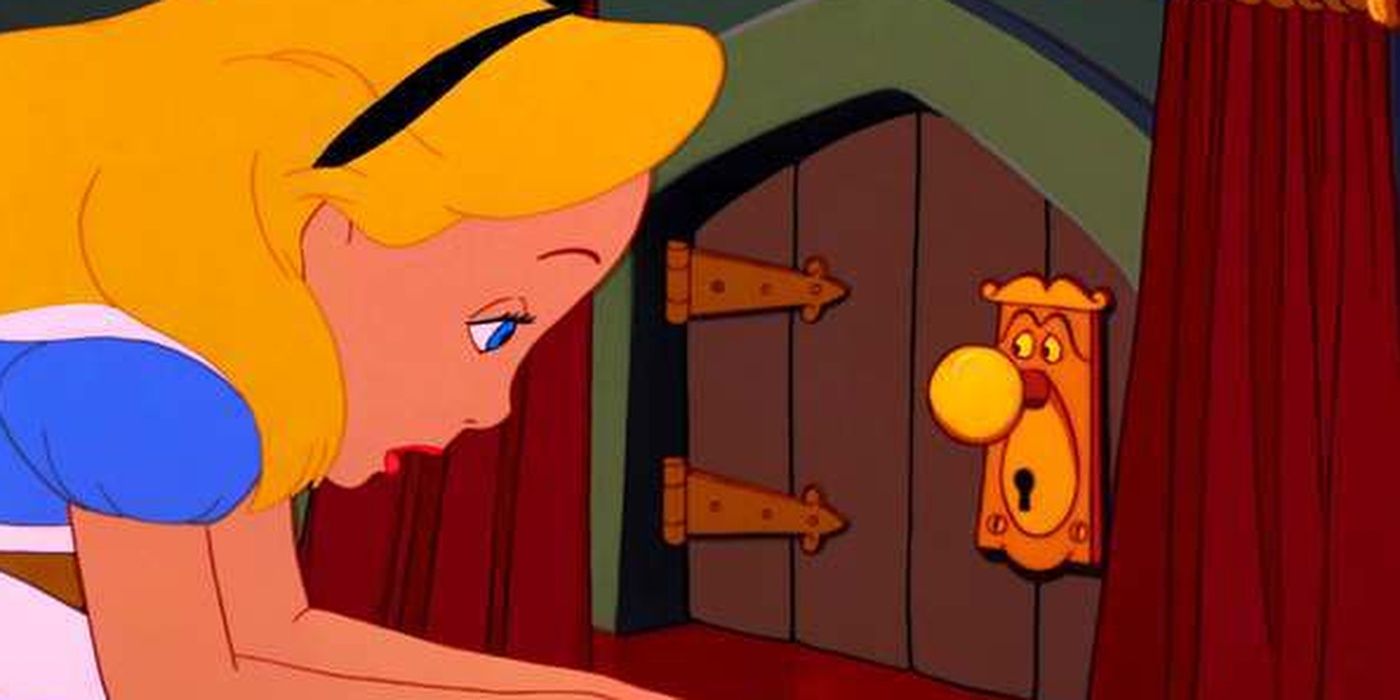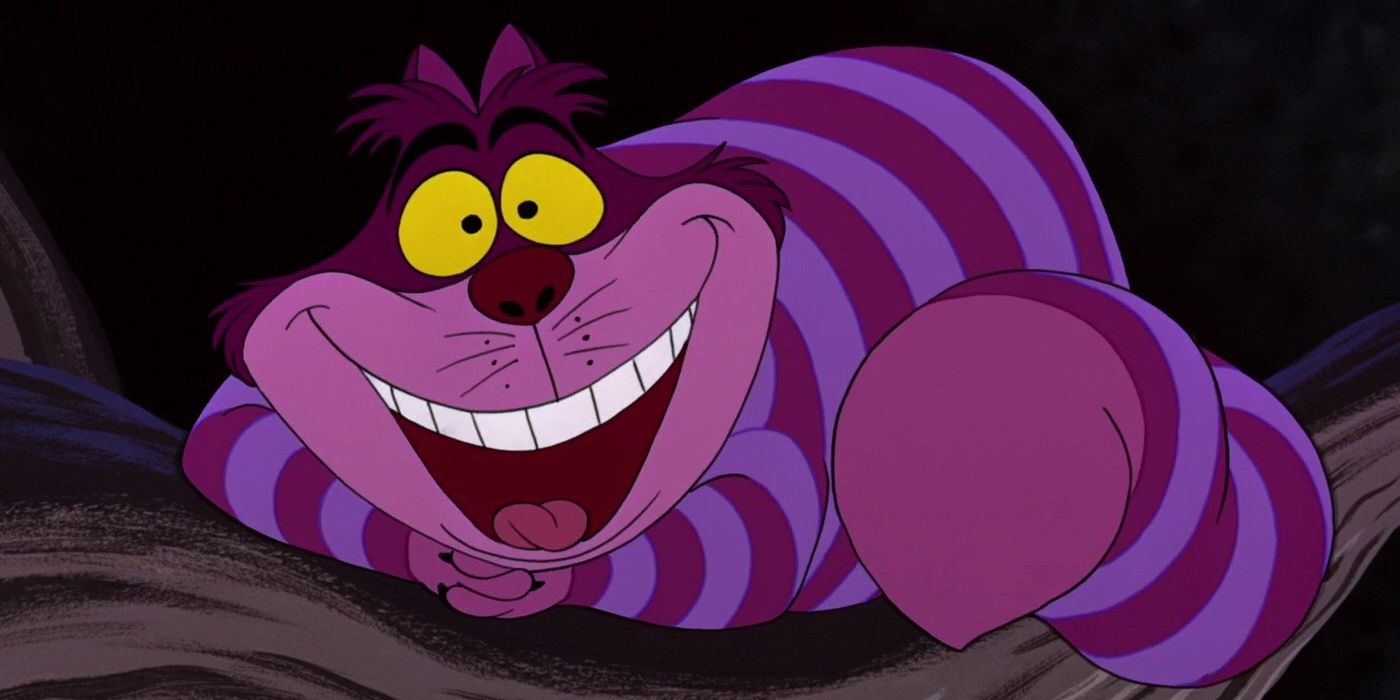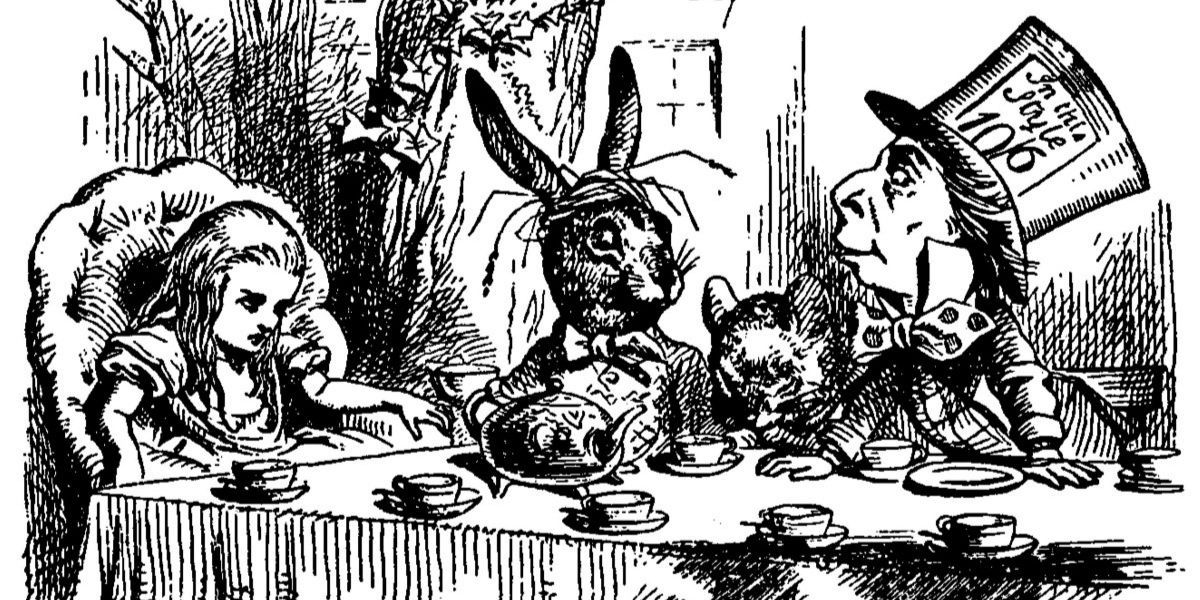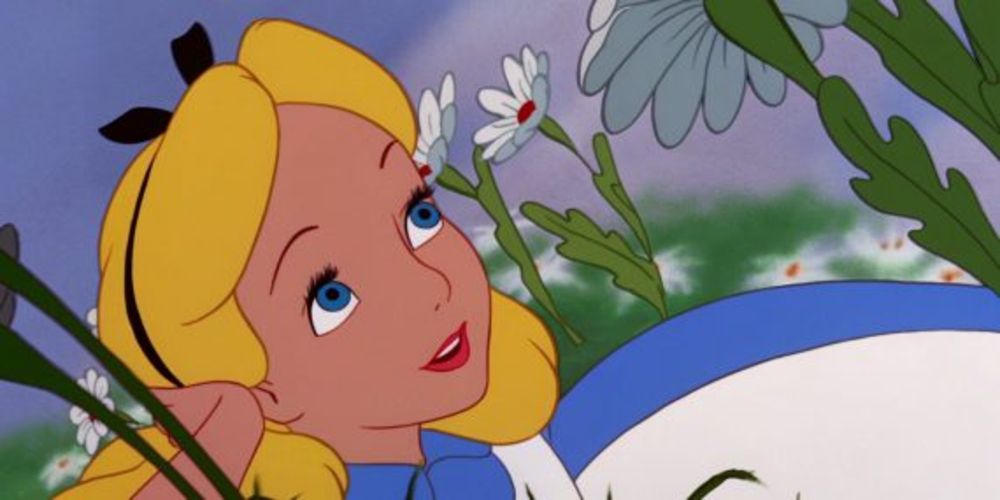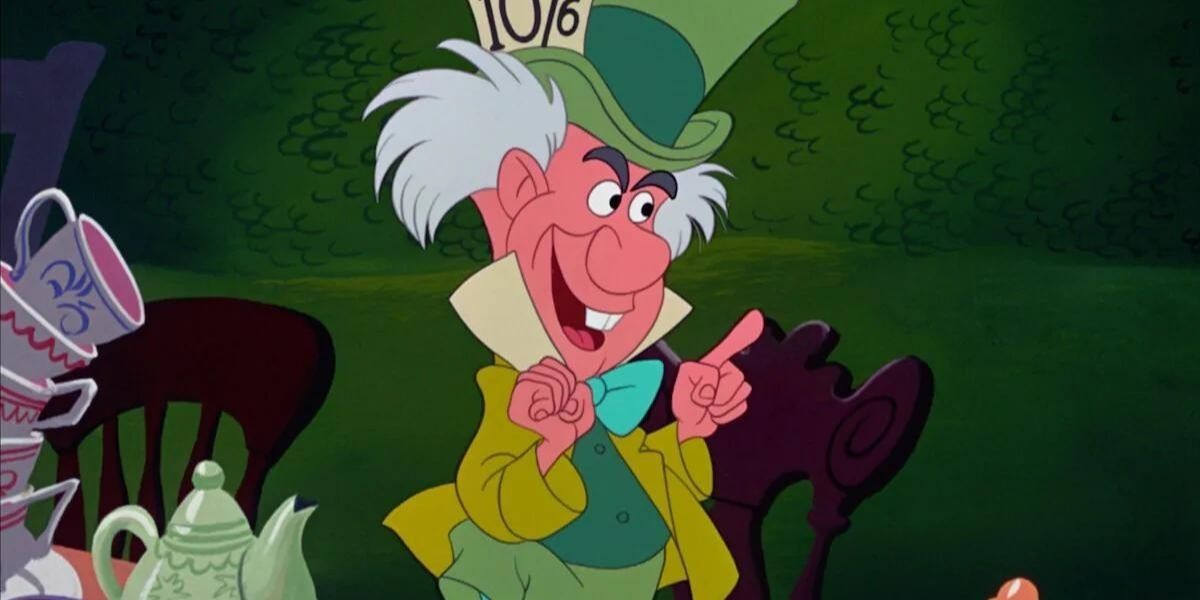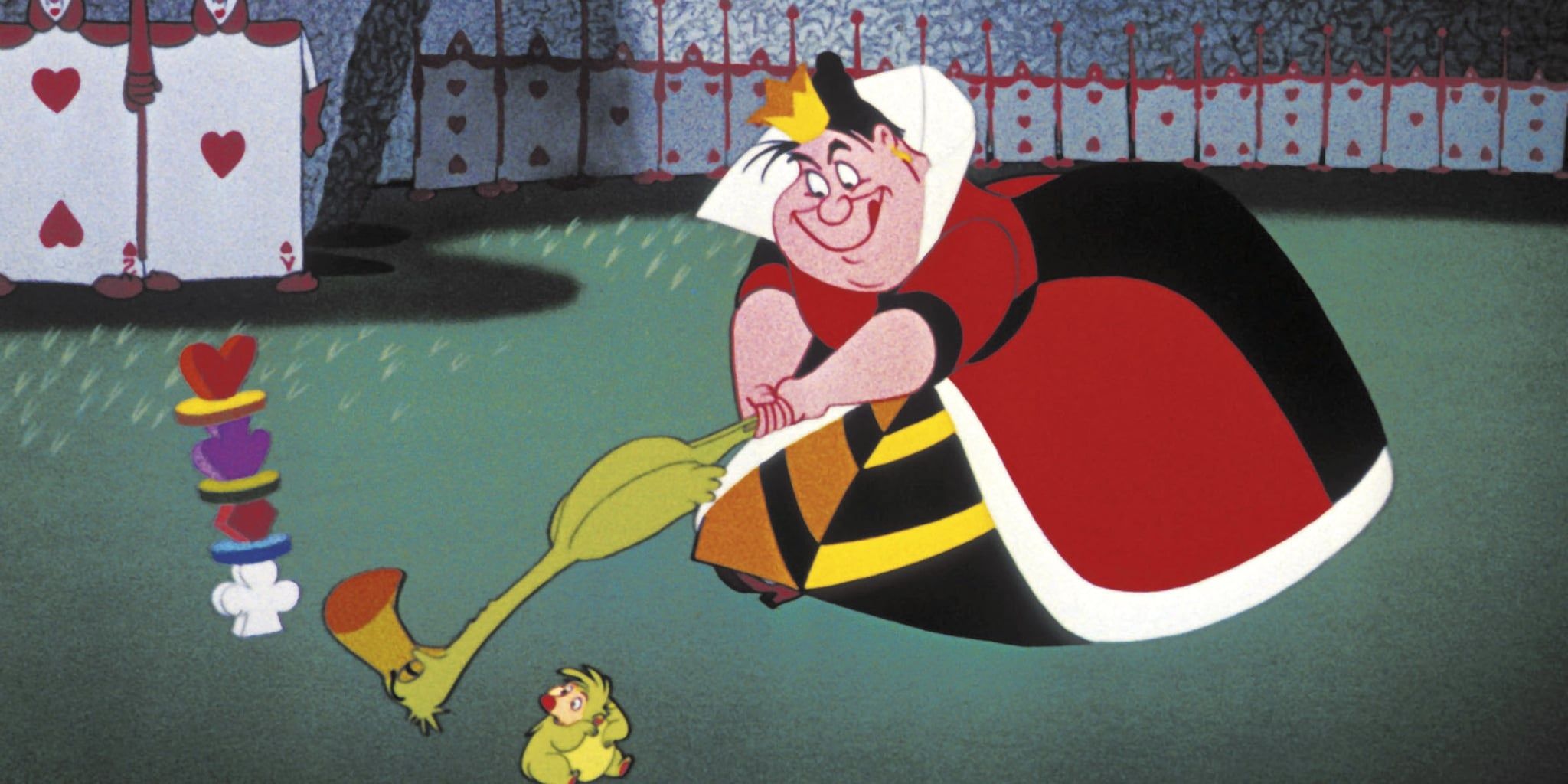Lewis Carroll's famous stories Alice's Adventures in Wonderland and Through the Looking Glass have been adapted countless times for the screen. One of the most iconic versions is Walt Disney's animated classic Alice in Wonderland from 1951, which stapled the look of Alice as a blonde in a blue dress, white apron, and Mary Jane shoes.
But, creating a classic was not always straightforward. Walt had to wait at least ten years to make his dreams of creating an Alice movie a reality, and, once he could, there were a lot of things to consider such as how Alice would speak and which characters to cut.
Disney Was Desperate To Make An 'Alice' Movie
Disney had adored the stories by Carroll since he was a schoolboy and had wanted to make an Alice in Wonderland movie since around 1932. But, with events such as the release of Paramount's version of the tale in 1933, productions of Disney's other animated movies, and international socioeconomic issues, production kept being deterred, and Alice was temporarily shelved. Yet, Disney remained persistent to achieve his goal, and he finally began to start making the movie a reality in 1946.
One Axed Song Was Rewritten for 'Peter Pan'
Alice features the most songs of any Disney feature, yet there were a number of songs that went unused. One such song was 'Beyond the Laughing Sky.' It was intended for Alice to sing at the start, but, due to Beaumont's limited singing abilities, the song was cut and replaced with 'In A World of My Own.' However, the song was not abandoned; the lyrics were rewritten, and it became 'Second Star to the Right,' the opening song to Disney's next feature, Peter Pan.
It Was Going To Be A Live-Action/Animated Hybrid
Before even Snow White, Disney had produced the Alice Comedies, a series of shorts that were an early live-action/animation hybrid. Disney planned to make the Alice feature film in the same way.
After the war, Disney hired British writer Aldous Huxley, author of Brave New World, to write the script. However, he found it too intellectual and serious for his intended audience, and, by this time, he realized that the only way that he could achieve his vision was through just animation.
Walt's Favorite Character Was Cut
The world of Wonderland is full of colorful and wild characters. In fact, there are over eighty in total, so, to include them all in a feature-length movie was not possible. Characters that were cut included the Griffin, the Mock Turtle, Humpty Dumpty, and the White Knight.
Disney was rather fond of the character of the White Knight, who was going to be one of the only characters that were kind to Alice. However, Disney decided to cut the scene, deciding that Alice should figure things out on her own rather than with help.
One Character Was Created Especially For The Movie
With many Wonderland characters being cut or merged, it would be unlikely to have the need to create new original characters for an adaptation. But, there is one character in Disney's Alice that is a completely original creation.
The talking Door Knob is the first character that Alice encounters in Wonderland after falling down the rabbit hole. The character of the Door Knob was created so Alice could have someone to bounce off her thoughts with instead of monologuing to the audience.
The Cheshire Cat Originally Had His Own Song
The mischievous Cheshire Cat is one of the most recognizable characters in the Disney franchise. Voiced by Disney regular Sterling Holloway, he makes his entrance by softly singing the first few lines of Carroll's famous poem Jabberwocky.
Beforehand, the Cheshire Cat was supposed to have his own original song. However, 'I'm Odd' was ultimately cut from the final picture, and the Cat was given the Jabberwocky poem instead since the character and scene of the Jabberwocky were also cut from the movie.
Disney Bought The Rights To The Original Illustrations
Disney was so keen to make an Alice movie that he bought the rights to the original illustrations from the book in 1938. Created by Sir John Tenniel, these illustrations remain iconic in the world of Wonderland to this day.
Initially, the animated characters were to look like the style of the illustrations, but, with all the linework and cross-hatching in Tenniel's drawings, animating them would have been laborious, so the idea was scrapped. It is also for this reason why Alice has white stockings instead of striped ones.
There Was A Thorough Debate Over Alice's Accent
Disney wanted Alice to have an accent easily accessible for all English-speaking people, so he hired an English professor from Columbia University for consultation and to create a specific phonetic speech pattern for Alice. Most believed that Alice should be English like Carroll, but a lot of Alice fans disagreed.
The accents debated were English, American, Australian, and Canadian. Thirteen-year-old Kathryn Beaumont was eventually cast to play Alice as she "had enough accent to please the English, but it is not too British for American audiences" as per Alice in Wonderland: An Illustrated Journey Through Time by Mark Salisbury.
The Mad Hatter Enraged The Sound Department
The zany Mad Hatter was voiced by actor and radio personality Ed Wynn. The animators used reference footage of the actors to work with, and the voice tracks were recorded in advance of those. However, Wynn had difficulty miming his own voice track, so he ended up ad-libbing most of his lines.
The crew thought his ad-libs were so brilliant they decided to use them instead of the original soundtrack much to the chagrin of the sound department, who complained about the amount of background noise of the footage.
One Artist's Contribution Stood Out From Over 750 Artists
More than 750 artists and animators worked on Alice, but perhaps the most noteworthy was the artist Mary Blair. Having produced a lot of concept art for the movie, it was Blair who ultimately set the overall color palette and tone of Alice, the bright whimsical colors steering away from more muted productions like Bambi.
Blair had worked on Disney productions before, but it is arguably her work on Alice that first stapled her name into the hearts of Disney fans all over the world.

